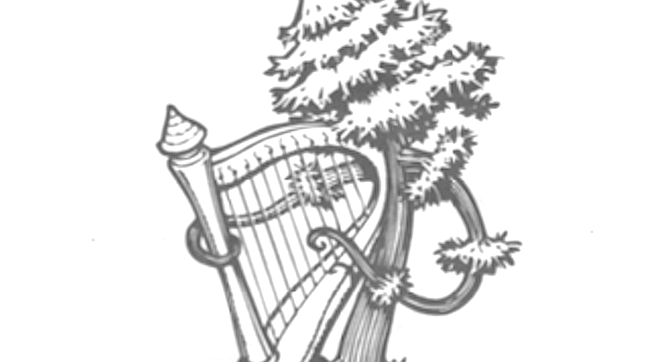 Facebook
Facebook
 X
X
 Instagram
Instagram
 TikTok
TikTok
 Youtube
Youtube

Matt: I just came back from a camping trip and I need to know...how does a pine tree make that whistle when the wind blows through it? There’s nothing in it that’s tubular, like a flute, so that principle probably wouldn’t apply. Does each tree have its own note? It’s keeping me awake nights wondering how this happens. I’m more exhausted now than before I went on vacation. — Nature Gurl, El Cajon
Next vacation, unfurl the sleeping bag on a street corner, stretch out, stare at the neon sky, and listen to the wind hum through the telephone wires. It’s the same as the pine trees in the mountain. Except for the piney smell. And that funky dehydrated beef stroganoff. And no place to plug in your giant-screen TV. Whether we’re talking the wind in the pines or the high-tension lines, we’re hearing the warblings of von Karman vortices. That’s Hungarian physicist Theodore von Karman. You have to be pretty smart to have a vortex named after you, I figure.
Anyway, when the wind blows past something cylindrical, like a pine needle or a telephone wire, the air flows around the cylinder and forms a swirl (a vortex) on the other side. The vortex drifts away from the cylinder and finally breaks loose. While all this is going on, another vortex is forming on the opposite side of the cylinder. So we have this zigzagged train of swirls winging downstream, and the rhythmic pattern generates the sound. The pitch rises as the wind picks up and the vortices form faster, and it falls as the wind dies. A thin cylinder creates a higher pitch than a fat one.
Next time you’re sitting around the campfire and everybody’s sick of “Kumbaya” and those dead old spook stories about the bloody hook on the car door handle, here’s an idea to liven up the party. Whip out a pencil, paper, calipers, and an anemometer. With von Karman’s clever formula, you can send the other campers into a stupor of admiration by calculating the pitch you’re hearing as a function of wind speed and cylinder diameter.


Matt: I just came back from a camping trip and I need to know...how does a pine tree make that whistle when the wind blows through it? There’s nothing in it that’s tubular, like a flute, so that principle probably wouldn’t apply. Does each tree have its own note? It’s keeping me awake nights wondering how this happens. I’m more exhausted now than before I went on vacation. — Nature Gurl, El Cajon
Next vacation, unfurl the sleeping bag on a street corner, stretch out, stare at the neon sky, and listen to the wind hum through the telephone wires. It’s the same as the pine trees in the mountain. Except for the piney smell. And that funky dehydrated beef stroganoff. And no place to plug in your giant-screen TV. Whether we’re talking the wind in the pines or the high-tension lines, we’re hearing the warblings of von Karman vortices. That’s Hungarian physicist Theodore von Karman. You have to be pretty smart to have a vortex named after you, I figure.
Anyway, when the wind blows past something cylindrical, like a pine needle or a telephone wire, the air flows around the cylinder and forms a swirl (a vortex) on the other side. The vortex drifts away from the cylinder and finally breaks loose. While all this is going on, another vortex is forming on the opposite side of the cylinder. So we have this zigzagged train of swirls winging downstream, and the rhythmic pattern generates the sound. The pitch rises as the wind picks up and the vortices form faster, and it falls as the wind dies. A thin cylinder creates a higher pitch than a fat one.
Next time you’re sitting around the campfire and everybody’s sick of “Kumbaya” and those dead old spook stories about the bloody hook on the car door handle, here’s an idea to liven up the party. Whip out a pencil, paper, calipers, and an anemometer. With von Karman’s clever formula, you can send the other campers into a stupor of admiration by calculating the pitch you’re hearing as a function of wind speed and cylinder diameter.
Comments